[ZX Spectrum, Richard Shepherd Software]
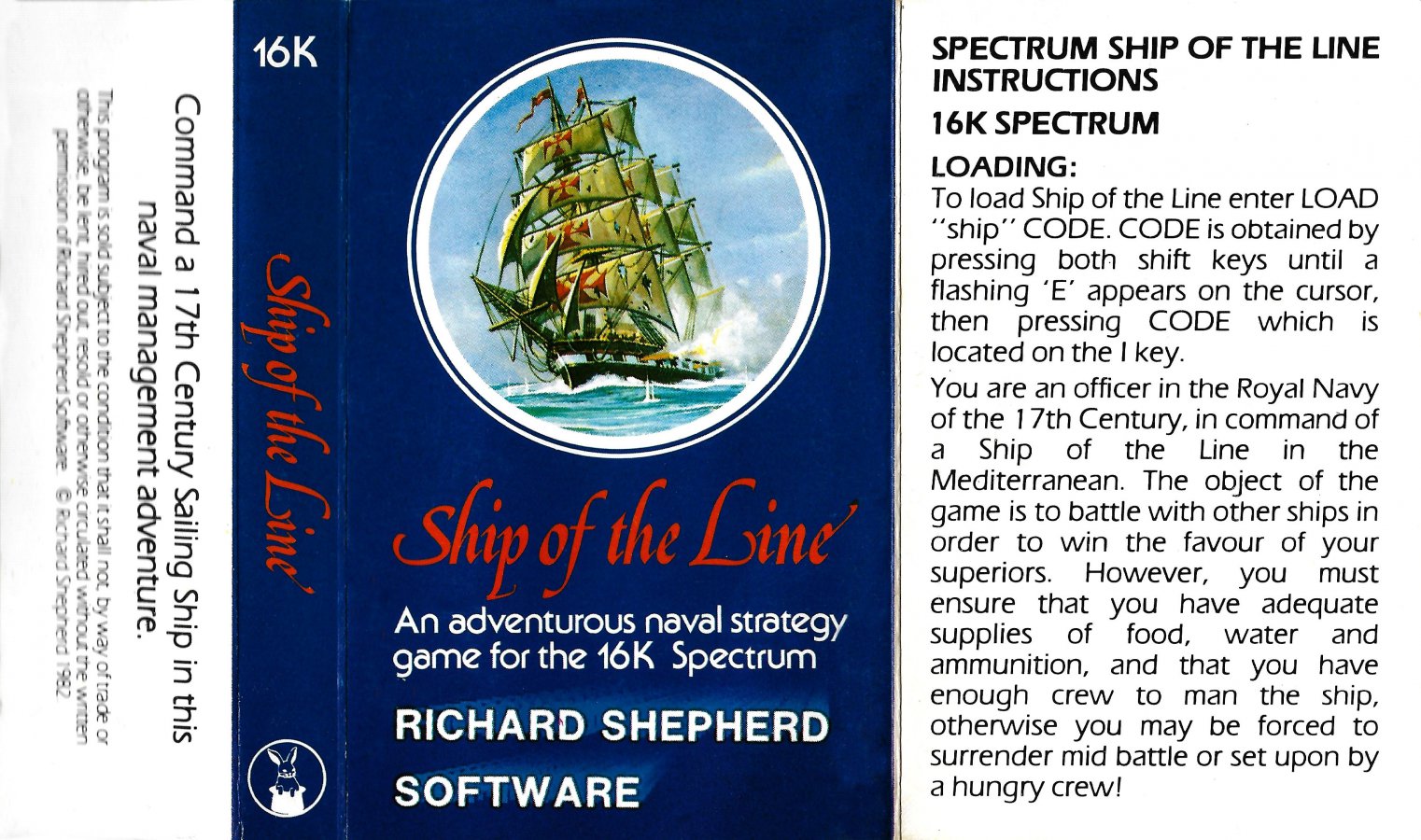
– Can you remind me what year we are, sailor?
– Somewhere around 1805, Mr. Narwhal
– That’s all I needed to know. Whatever the exact year, we are still fighting the French!
As I was preparing my list of games for 1985, I found a new site which had the advantage of having its own categorisation of games, including for little-covered platforms like the Thomson computers. While I don’t agree with all the choices made by the site owner (eg there is a split between “RPG Adventure” games and “D&D Adventure” games that I don’t understand), this re-categorisation outlined a few games that I missed, including today’s Ship of the Line. SpectrumComputing had classified Ship of the Line as “management”, and while I think it is probably more correct than calling it a wargame, Ship of the Line is still adjacent enough to a wargame that I wanted to BRIEF it.
Ship of the Line entrusts the player with a ship in the early 19th century, with the mission to capture or sink as many hostile vessels as possible before returning to port.
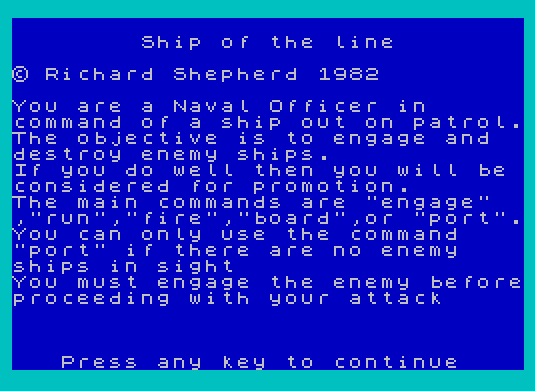
I start as midshipman on a cutter. 50 crewmen on a cutter is realistic, being in command of one as a midshipman a lot less, but as we will see the Admiralty has had problems with dementia among its ranks, so maybe I’m all they’ve got.
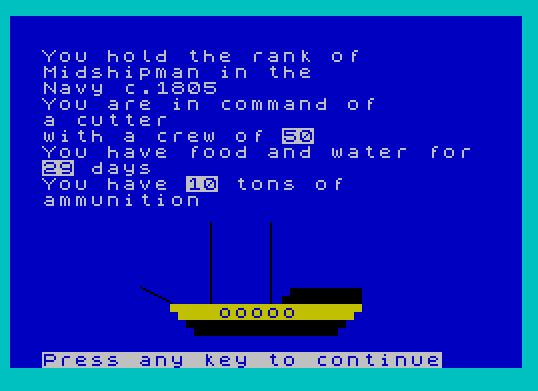
I start my patrol with several days of not seeing anything. I need to type “go on” to move on with the game.
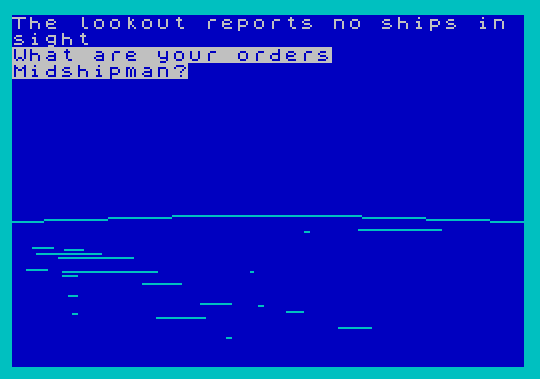
– “Keep looking?”
From time to time, random events happen, costing either ammo, food & water or crewmen.

Eventually, I sight a ship. I can either engage or flee – and of course I engage. This reveals what kind of ship I am fighting:
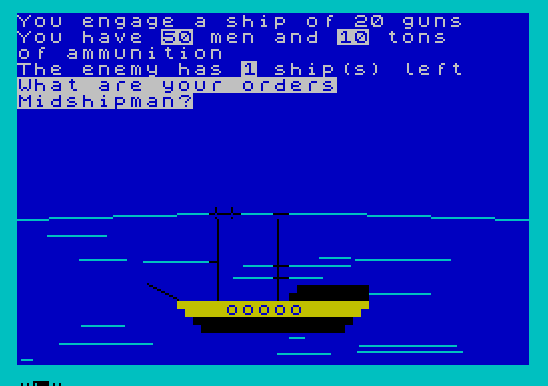
I choose to fire at the enemy ship, and it immediately surrenders.
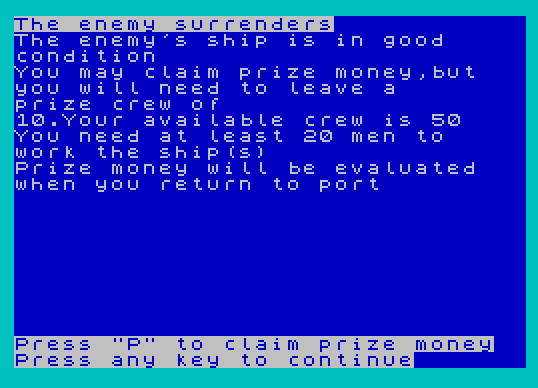
After leaving a prize crew, I continue my patrol and encounter no fewer than 3 ships, which I engage all the same!
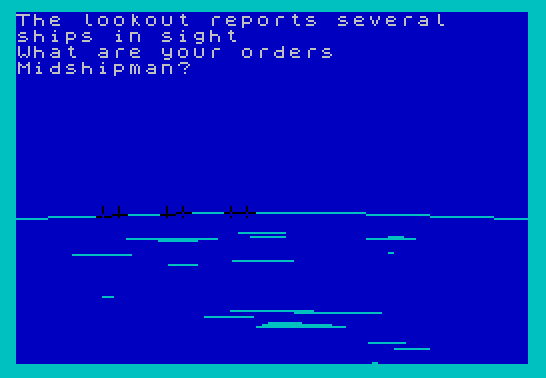
My brave little cutter with an incomplete crew and 14 guns is now facing 140 guns – which is not a problem for me. FIRE!
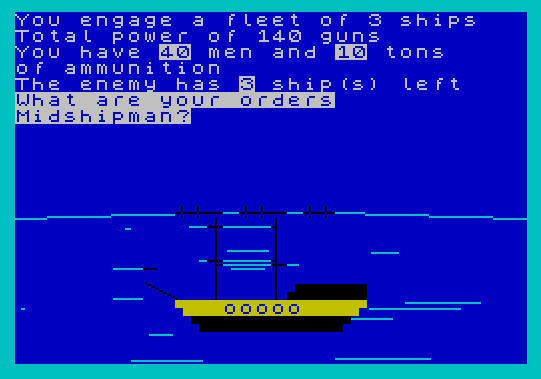
After “firing” a few times, I have lost 6 men and the enemy has lost 2 ships.
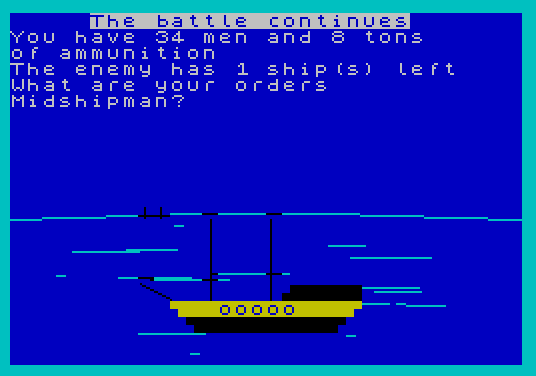
Time to board, even though I have no idea what kind of ship I am facing. For all I know, it’s a troop transport!
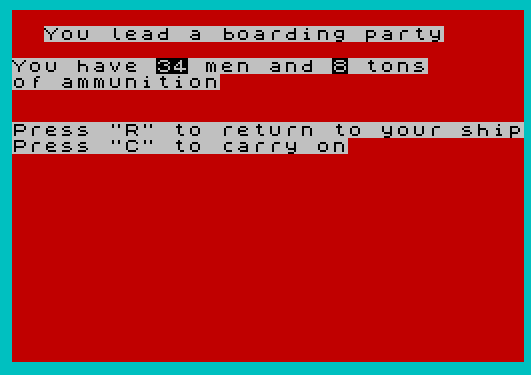
The result is once again that “the enemy surrenders” but this time I can’t leave a prize crew, probably because my crew is now too small for that.
I continue my patrol, sink or board a handful of isolated ships and then encounter a group too large for my surviving crewmen:
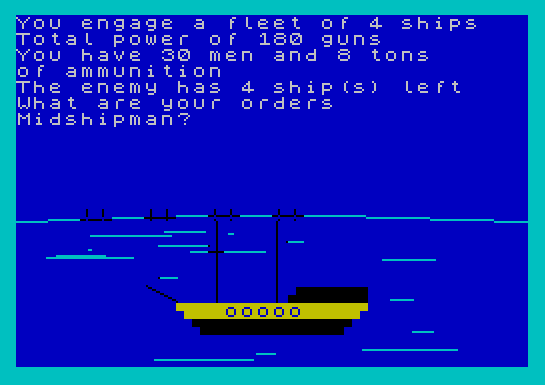
I flee, they pursue me, but then I flee again and this time I lose them.

I return to port and receive prize money and a promotion… but before that I must take a “simple memory test”, which really supports my hypothesis about the dementia epidemic.
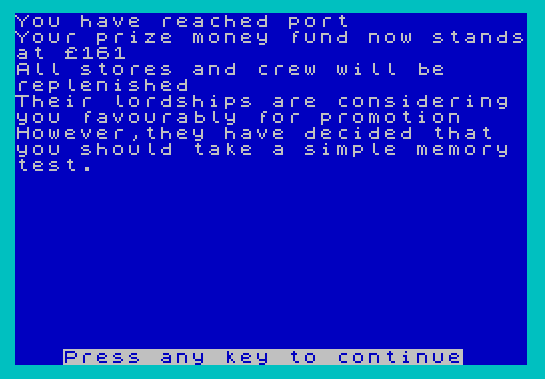

The “test” went too fast to take a screenshot, but the game simply flashed the letters x and p, which I retyped – and done, I am a Lieutenant. I assume the more you rise in the ranks, the more letters there are.

I am now in control of a brig, a ship that would typically have around 20 guns and 100 crewmen.
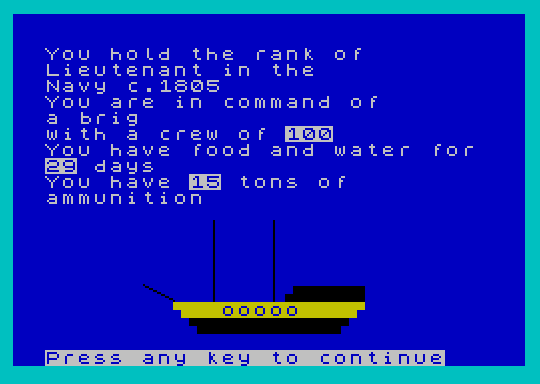
Unfortunately, I am either unlucky or the French have scaled their skill to my ship, because in my first combat I lose 16 crewmen, which would have been patrol-ending with the cutter! At least, I capture another enemy ship.
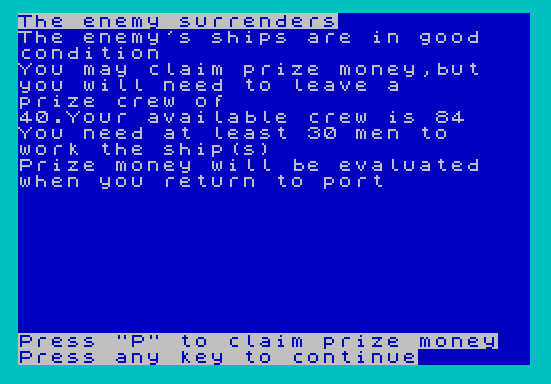
The following combats are equally deadly, and I am quickly down to below 40 crewmen. I try to return to port, but I keep sighting enemy ships so I can’t.
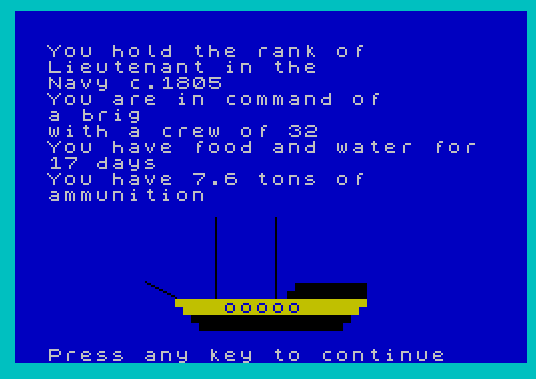
I flee most combats, but eventually I fail to escape and I am forced to fight. The game abruptly ends when I pass below the 30 men threshold – no recap, no conclusion, nothing.

So that’s Ship of the Line. There is not much of a wargame there, given there are only 3 “moments” in the game where decisions are required:
- High seas with no enemy in sight (“Go on” or “Port“)
- High seas when one or several enemies are in sight (“Engage” or “Flee“)
- Combat (“Fire“, “Board” or “Flee“), Boarding having “Carry on” or “Return to ship” as options,
Instead, Ship of the Line (memory game excepted) belongs to what I call the “allocation game” genre, which I describe as text-driven games “about allocating resources every turn and then checking the results without directly handling combat at any level”; in this case the resources are crewmen, ammo and supplies. This genre was commonplace on mainframe (Civil War belonged to it) but in 1982 it was obsolete, except as type-in games. However, computer gaming was still new in UK, and so in 1982 there was still the occasional game of that genre, for instance with the early MC Lothlorien games.
Richard Shepherd Software is a husband-and-wife company that blossomed in 1982 and 1983 like so many new British video game companies. It mostly focused on adventure games, which explains why it has a deeper coverage at Renga-in-Blue, even though for now Renga did not cover any of their real adventure games.
After this short intermission, we will return to our regular schedule of games with real maps and real wargame credentials!